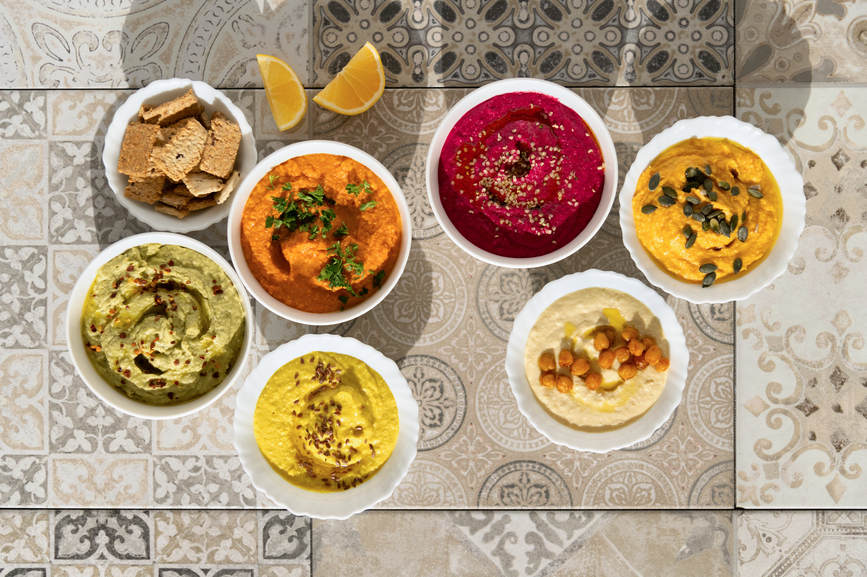With summer just starting, we caught up with Roy Elam, chef of Donna Jean, a plant-based Italian restaurant in Los Angeles, who revealed some of the top summer food trends to look out for to make the most of the hottest (literally) season of the year. From his top ingredient picks to easy ways to reduce food waste this time of year, Elam didn’t gatekeep anything from us—and all of his tips were crafted with plant-based folks in mind. Now who’s ready for a poolside nosh?
4 plant-based summer food trends to keep an eye out for, according to a chef
1. Using tons of fresh, seasonal ingredients anywhere and everywhere
While some fads emerge rather unexpectedly (Dalgona coffee—never forget), it’s easy to predict that seasonal ingredients are usually at the top of every chef’s summer food trends each year. After all, they tend to live by the motto that fresh is best. “For me, it’s always about what’s coming into season,” Elam says. This means that you can expect to find quintessential summer staples on most menus, like cucumbers, tomatoes, eggplant, and corn, to name a few. On the sweeter fruit side of things, he notes that you should expect tons of stone fruits, like peaches, nectarines, pluots, plums, and apricots.
That said, what’s seasonal and “best” will vary depending on where you are. “Find what’s growing around you. For instance, in Illinois where I’m from, there are lots of corn and soybeans… But once, I found ghost peppers in a rural area of the state, and they were delicious. I would really encourage people to search out things that are growing around them first,” Elam says. To that end, Elam partners with local farms to ensure he’s always featuring the highest quality produce at Donna Jean.
TL; DR? Always make the most of the freshest produce nearest to you as your first line of defense.
2. Smoking vegetables
Light and refreshing foods tend to be the way to go come summertime. However, Elam notes that one summer food trend he says he can’t get enough this year of is adding nuanced flavors to simple ingredients by smoking them. “I’m currently working on making a smoked beet hummus for the summer menu that adds just enough extra umami flavor to the whole thing,” Elam says.
But like most things in life, less is more, especially when it comes to smoking delicate summer produce. “Vegetables don’t like heavy smoke. Instead of using something like Mesquite, we’ll use something like apple or cherrywood,” he says. As such, Elam’s testing smoking beets using applewood, then mixing them with traditional hummus ingredients that yield a stunning Barbie-pink side dish. (You gotta see it for yourself!)
The good news is that home cooks don’t need any fancy-schmancy equipment to smoke fresh produce at home. To smoke foods, Elam uses a method called “hot smoking,” which involves cooking the food slowly to ensure the smoke flavor is infused into the food. Although you can technically do this inside your kitchen, Elam urges against it. Instead, he encourages folks to take advantage of the summertime weather and head outdoors. “We have a huge hood that’s pulling all of the smoke in the kitchen from our stovetop smoker, but I wouldn’t recommend doing it at home like this,” he says.
Instead, when at his house, he uses a propane burner setup outside and a few heat-safe pans. “I soak the wood chips for an hour, drain them, and put them in the bottom of a hotel pan. Then, I put a perforated hotel pan on top of that and a lid over it. Since the wood chips are kind of wet still, this will smoke and steam foods at the same time,” Elam says.
Then, the important thing is not over-smoking the food, which he says will make it bitter and inedible. “You just want it to be kissed with smoke nicely,” Elam says. For beets, an hour is more than enough.
3. Simplifying side dishes
In most cases, seasonal produce is already exploding with loads of delicious flavors (not to mention nutrients) on its own. As such, Elam urges folks to simply enhance the subtle flavors of the produce with delicate ingredients. For example, he pairs cucumbers with a light and refreshing marinade made of olive oil, salt, and lemon juice. Or, he’ll quickly roast eggplant in a pizza oven and pair it with a bomba calabrese sauce (a spicy hot pepper spread) for an explosion of flavor.
4. Using as much of every summertime ingredient as possible to reduce waste
For Elam, reducing food waste is also a huge priority at his vegan, plant-based restaurant. For instance, the chef has been working on a green onion project starring the stems, which he’s using to make green onion kimchi. Another experiment he’s testing out is drying onions and turning them into homemade onion powder (genius!).
Finally, if you find yourself at the end of the season or with too much produce that’s on the brink of going bad, Elam recommends fermenting or pickling them to preserve and prolong their shelf life.
Can’t wait to try? Learn how to make beet hummus ASAP:
Our editors independently select these products. Making a purchase through our links may earn Well+Good a commission.
Stay connected with us on social media platform for instant update click here to join our Twitter, & Facebook
We are now on Telegram. Click here to join our channel (@TechiUpdate) and stay updated with the latest Technology headlines.
For all the latest Food and Drinks News Click Here


